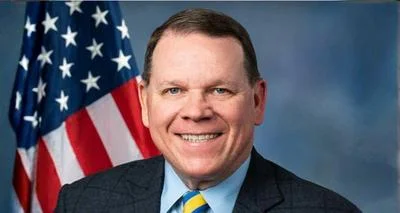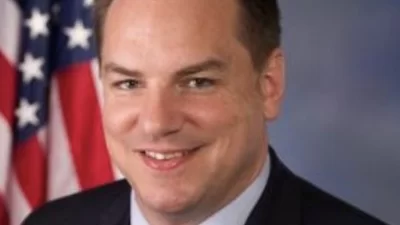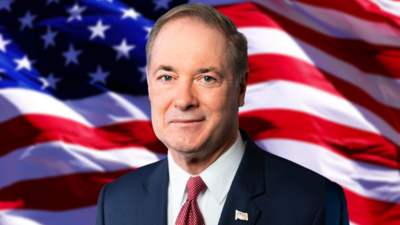CONTACT: Laura Capps/Melissa WagonerJune 27, 2007 (202) 224-2633Executive Session of the Senate Health, Education, Labor and PensionsToday, our Committee considers important legislation to carry on the work begun overtwo decades ago when the landmark Hatch-Waxman law was enacted in 1984. That bipartisaninitiative to deal with out-of-control drug prices combined patent reform incentives toencourage competition with new incentives to encourage innovation. It’s brought new drugdiscoveries to help patients and generic versions of vital drugs to make them more affordable.At that time, however the complex biological molecules that form many important drugs wehave today did not exist, and there was no need for an abbreviated pathway to approvefollow-on versions of such drugs.
Now, with the ongoing life sciences revolution, advances in our understanding of biology andbiotechnology have created a need for safe versions of follow-on biological drugs.The Biologics Price Competition and Innovation Act we are considering establishes a regulatorypathway for FDA to approve safe and effective follow-on and interchangeable biological drugswhile maintaining the incentives that spur innovation. This Act will ensure that many moreAmericans will be able to get the life-saving drugs that are transforming health care today.Senator Hatch, Senator Clinton, Senator Enzi and also Senator Schumer have all been leadersin preparing this bill. Three basic principles guided our work.
First, we must be led by science. Acceptable legislation on follow-on biologics must not prejudgescience, but should enable FDA to make the best decisions based on the most completescience reasonably available.
Second, protecting patient safety is essential. Congress must make certain that anydrug available to patients is safe and effective.
Third, innovation must be valued and promoted. It’s essential to help patients affordthe drugs they need, but it’s also essential to provide incentives for the innovations that willproduce the medical miracles of the future.
The bill gives the FDA the flexibility it needs to apply the latest scientific advances in theregulatory process, so that these new follow-on products will be safe and effective.It also gives the FDA the flexibility to adapt to changes in scientific knowledge and does notfreeze in place an inflexible regulatory structure.
Unprecedented scientific advances are taking place, and seriously ill patients have alreadybegun to see the benefits of this new era through new wonder drugs that can make thedifference between life and death.
These biological products are complex molecules whose healing power is beingbrought to patients by dynamic biotechnology companies. Such drugs were once a rarity inmedicine, but each day now brings new hope from new breakthroughs.
With this extraordinary progress comes a challenge to public policy. Due to the costof developing and manufacturing new biologics, their price is often steep. They can costpatients tens or even hundreds of thousands of dollars a year, putting an extraordinary strainon the budgets of those who must pay the bills -patients, insurers, and governmentprograms.
This Act will save American families and the American government billions of dollars byallowing follow-on and interchangeable products to come to market at reduced prices but withthe same high level of safety.
The bill also recognizes that these incredible advances come only when sufficient incentivesexist to encourage their development and that is why we have included 12 years of dataexclusivity.
It is essential to have a clear understanding of the circumstances in which this exclusivityapplies. The 12 years of exclusivity applies only to products that are analogous to a “newchemical entity". Once a product is first approved under Section 351(a) of the Public HealthService Act, it is granted 12 years of data exclusivity. Subsequent supplemental applications- or even new applications containing a new indication, dosage form, route of administrationor strength do not generate a new 12 years of exclusivity.
This is an area of law where it is vital to be precise in legislative drafting. In the bill as filed,we used the phrase “first licensed" to make clear that 12 years of exclusivity applied solely tothe initial approval of a product, not to subsequent minor modifications. In the Chairman’sMark, we added a new provision to provide greater clarity, specifying that this phrase “firstlicensed" does not apply to any supplemental application or even a new license for a “newindication, route of administration, dosage form or strength."
We welcome the views of experts on these provisions. I look forward to working with mycolleagues to see that the language is as sharp and precise as it can possibly be, and staff areauthorized to make changes to achieve the utmost in precision.
The bill also establishes a new process for rapidly identifying patents that could be disputedbetween the brand company and the biosimilar applicant. It recognizes the inherentcomplexity of the patents on these intricate biological molecules, and it also expedites thepatent resolution process.
That process, like much of the rest of the bill, is a balance between competing concerns. Thebrand company must be able to assert its patent rights on all appropriate patents. But theprocess shouldn’t be a roadblock for the approval follow-on products.
This legislation strikes the appropriate balance. It includes incentives for both parties to seekexpeditious resolution of patent issues, and it includes deterrents for all participants not togame the system.
Overall, the bill reflects a balanced approach that enables patients to have safe, effective andaffordable biological drugs, while preserving the incentives that have brought these life-savingadvances to the American public.
We have a number of amendments that members of the committee have offered and I lookforward to discussing them with you.









